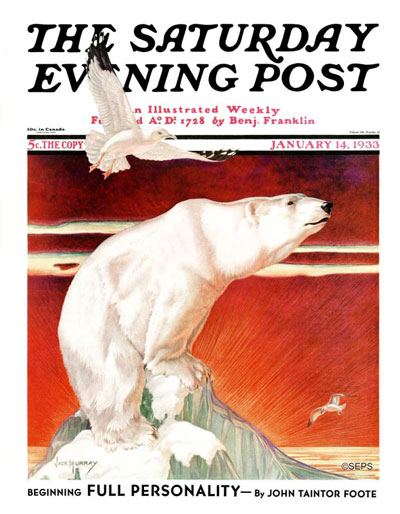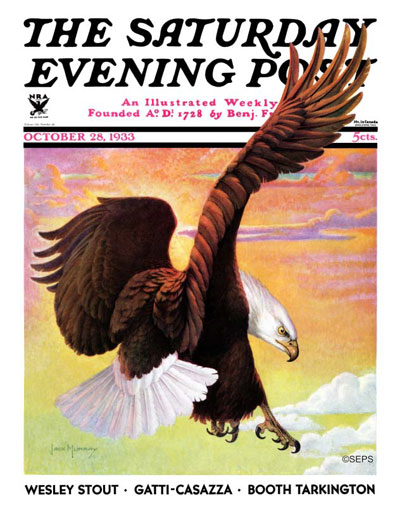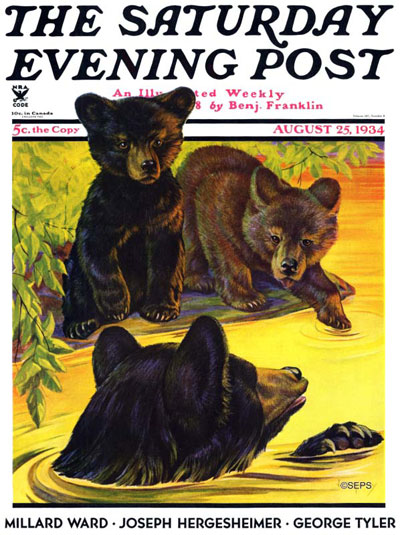Artist Jack Murray: The Call of the Wild
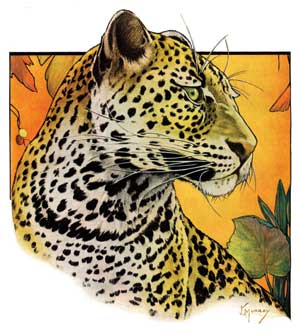
The Saturday Evening Post
August 29, 1931
Murray was a city kid who, very early in life, developed an interest in wildlife. Born in 1889, he grew up in Boston, where he began drawing animals while still in grade school. Murray would later graduate from the renowned Massachusetts School of Art, where he met his future wife, fellow artist Helena Feeny. The couple married in 1921 and, in lieu of a honeymoon, moved to New York that very day.
In New York, Murray found work as a commercial artist, which soon afforded the two of them the opportunity to buy a farm outside the city. There, he fixed up a studio where, in his spare time, he pursued his true passion, painting wildlife. Murray’s career reached a turning point when one of the paintings he had made purely for love — a majestic leopard (top) — was bought by The Saturday Evening Post.
His discovery by the Post led to assignments for the American Museum of Natural History as well as books and magazines, including The Country Gentleman and Boy’s Life. In 1947, his image of a pair of snow geese mid-flight was selected for the Federal Duck Stamp Program.
All told, Murray would paint 12 covers for the Post. His final one depicting two white wolves closing in on prey appeared on the March 8, 1941, issue — and once again on the January/February 2016 cover.
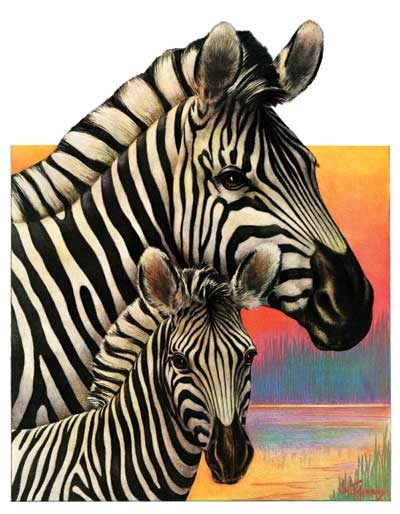
The Saturday Evening Post
June 25, 1932
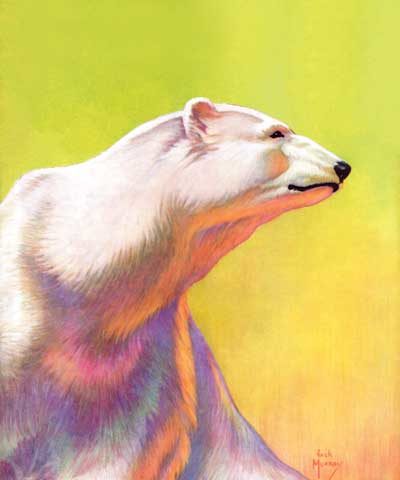
The Saturday Evening Post
February 1, 1936
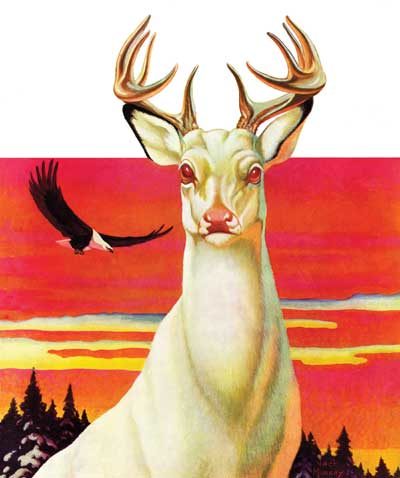
The Saturday Evening Post
January 8, 1938
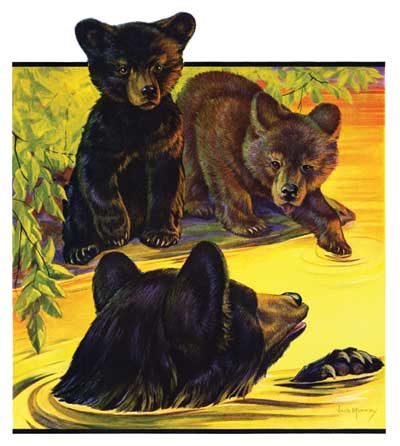
The Saturday Evening Post
August 25, 1934
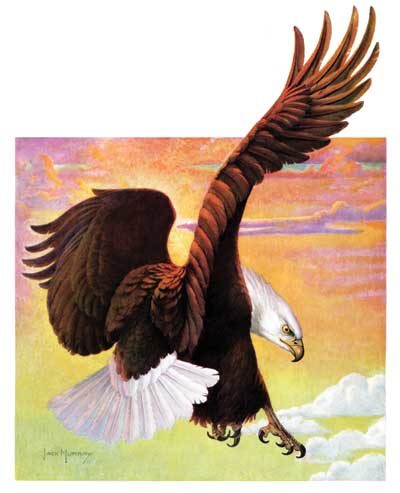
The Saturday Evening Post
October 28, 1933
Covers by Jack Murray
Jack Murray
January 14, 1933
Jack Murray
October 28, 1933
Jack Murray
August 25, 1934
Purchase prints of Jack Murray’s work at Art.com.
Classic Covers: Jack Murray’s Wilderness
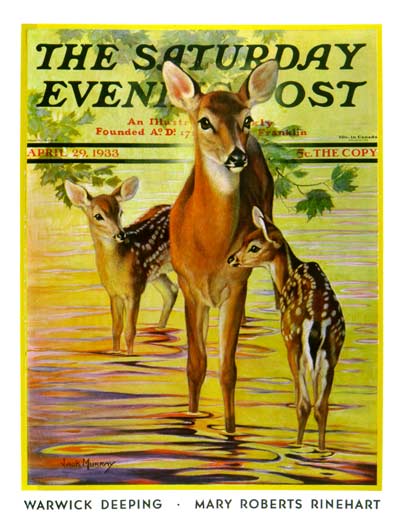
from April 29, 1933
This beautiful Jack Murray deer cover is from 1933. Murray was born in Pittsburgh on August 12, 1889, the son of two opera stars, J.K. Murray and Clara Lane.
The Murrays received many invitations to sing in Europe. These were refused, as the family was not fond of ocean journeys — and for good reason.
When J.K. Murray was a boy, his parents and siblings took a voyage across the Atlantic.The ship ran into a storm, losing its rudder. For a full miserable month, it was tossed around mid-ocean until rescue arrived.
Not surprisingly, the horrifying incident cast a long dark shadow on thoughts of travel for years to come.
Jack Murray “showed an early interest in wildlife art, making his first drawings when he was 9 years old, and getting into taxidermy at 14,” according to the Russell Fink Gallery, of Lorton, Virginia, which specializes in wildlife art.
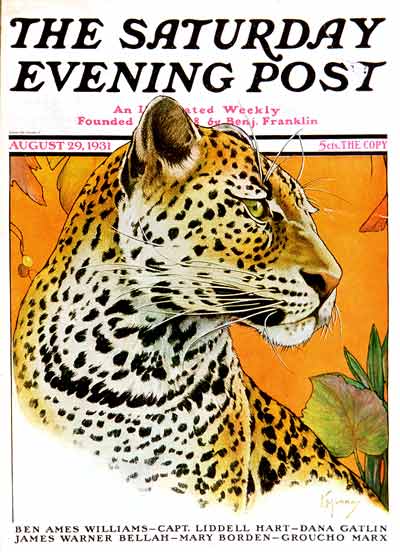
from August 29, 1931
In the 1920s, Murray began to get work drawing and painting for advertising agencies. (Most Post illustrators, including Norman Rockwell, did artwork for ads.)
From the Russell Fink Gallery: “In 1926 he and Mrs. Murray bought a farm outside the city to use as a summer place. Here he fixed up a studio where he could keep on with the major interest of his life, the painting of wildlife. It was work that had been relegated to spare moments over the years, but the turning point came when one of these ‘hobby’ paintings was accepted as a cover by The Saturday Evening Post.” That was this leopard painting from 1931.
Legendary publisher George Horace Lorimer made The Saturday Evening Post a showplace for stunning wildlife paintings, a determination that makes us grateful today when we see covers like Murray’s 1934 cover of bear cubs (below).
At a time when the importance of conservation was a relatively new concept, it gladdens us to see the obvious respect the artist had for these splendid creatures.
Covers by Jack Murray
Jack Murray
January 14, 1933
Jack Murray
October 28, 1933
Jack Murray
August 25, 1934
Purchase prints of Jack Murray’s work at Art.com.
In addition to a dozen Post covers, Murray illustrated for books and magazines such as Boys’ Life, Outdoors, Better Homes and Gardens, and several others, at the rate of at least a cover a month.
He declined an invitation for an exhibit of his work in Paris, either because of his demanding schedule or because of the ingrained family inclination to avoid ocean voyages. Murray passed away in 1965.
Reprints of Murray’s Saturday Evening Post covers (with or without the masthead) are available at Art.com.
